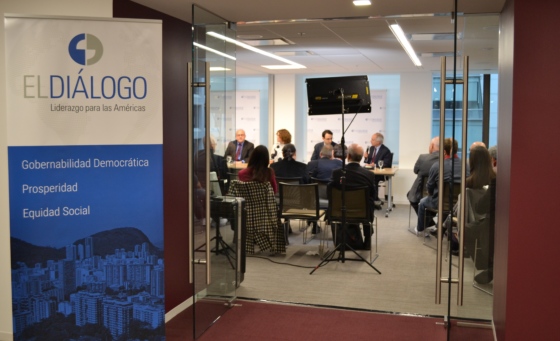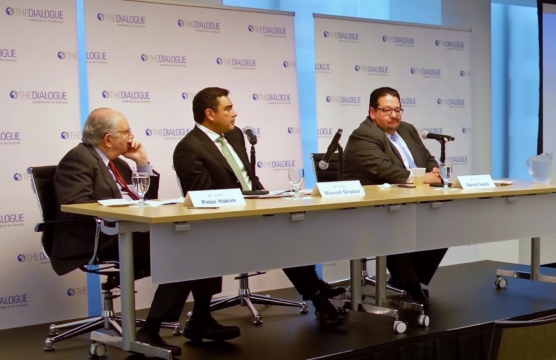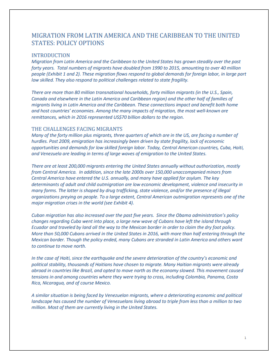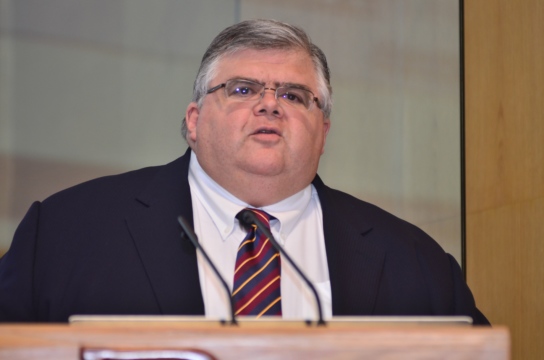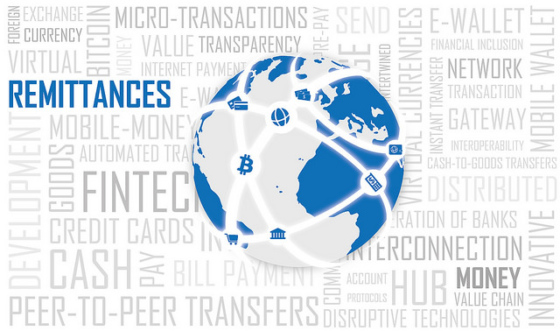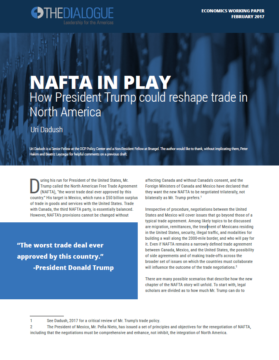
NAFTA in Play: How President Trump could reshape trade in North America
A review of three plausible scenarios for a new NAFTA.
A review of three plausible scenarios for a new NAFTA.
Across Latin America, the sustained decline in global oil prices has had a profound impact on economic growth, political stability and the viability of resource nationalism – when governments assert more control over the nation’s natural resources.
What plausible explanations are there for the unprecedented, anti-corruption social and institutional reactions recently seen in Latin America?
Mexico’s energy reform has led to a remarkable boost in investment, and the expected increase in the country’s crude oil production will strengthen energy security not only for Mexico but also at the regional level.
Cuba Posible entrevista a Peter Hakim y Michael Shifter en conjunto para conversar sobre la integración latinoamericana y las relaciones “Norte-Sur”.
Lisa Viscidi, Director of the Energy, Climate Change and Extractive Industries Program, testified before the US House of Representatives Committee on Foreign Affairs on the subject of “Energy Opportunities in Latin America.”
This study presents the findings of a migrant survey conducted in November 2016 about remittances, new technologies, and financial access among Latin American migrants in the United States.
On Thursday, May 11th, the Inter-American Dialogue hosted an event with Denise Dresser, professor of Political Science from the Instituto Tecnológico Autónomo de México. During the event: What’s Wrong with Mexico & How to Fix It, Dresser addressed the challenges the country is facing today such as the US-Mexico relations, Enrique Peña Nieto’s presidency, and corruption.
On May 9th, 2017, the Dialogue hosted an event with Kevin Casas-Zamora, Sarah Chayes, and Carlos Santiso, on how accountability reforms have changed Latin America’s fight against corruption.
In the early 1980s, when the Inter-American Dialogue was born, the U.S. was actively supporting right-wing governments from El Salvador to Nicaragua. There were “tremendous misunderstandings between Latin America and the United States,” says Michael Shifter, longtime president of the D.C.-based think tank. These days, it seems those tremendous misunderstandings have returned with a vengeance, making the Dialogue’s work even more relevant.
Remittances to Latin America and the Caribbean surpassed US$70 billion in 2016, representing a critical source of income for the region. Two new Dialogue studies shed light on remittances, emerging technologies in methods of transfers, and opportunities for financial inclusion. These studies were presented and discussed on May 17th at an event moderated by Peter Hakim, President Emeritus of the Dialogue, and featuring speakers Manuel Orozco, the Director of the Dialogue’s Migration, Remittances, and Development Program, and Daniel Ayala, the Executive Vice President and Head of Global Remittances Services for Wells Fargo.
Migration from Latin America and the Caribbean to the United States has grown steadily over the past forty years. In addition to leaving their countries amidst political and economic hardship, the vast majority of these migrants face additional challenges to their legal status. One way to look for solutions is to consider a comprehensive approach to migration through recruitment, retention, return, relief and reform.
During an exclusive interview with South Korean newspaper Maeil Business, Michael Shifter, President of the Inter-American Dialogue, noted that certain Trump administration’s policies – such as pushing for the renegotiation of NAFTA – could have positive effects for South Korea. “Donald Trump’s new trade policy can be an opportunity for Korea to expand its reach to the Latin American market.”
Mexico’s unemployment rate fell to a lower-than-expected 3.56 percent of the economically active population in May, the lowest unemployment reading since December 2007, according to data released on June 26 by state statistics agency INEGI. On June 22, Mexico’s central bank, led by Agustín Carstens, raised its key interest rate but hinted that it may be the last hike in its current tightening cycle. Are Mexico’s economic indicators showing signs of promise?
Enabling tools that motivate remittance recipients to access and use a variety of financial services needed to increase assets is key to wealth generation.
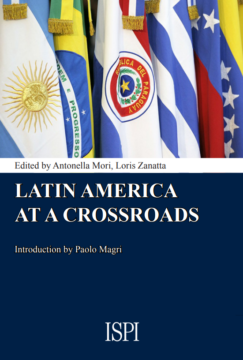
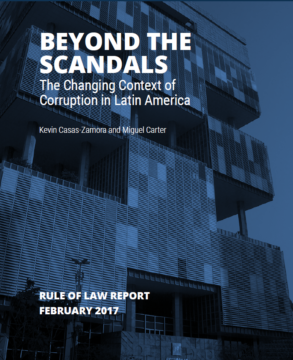
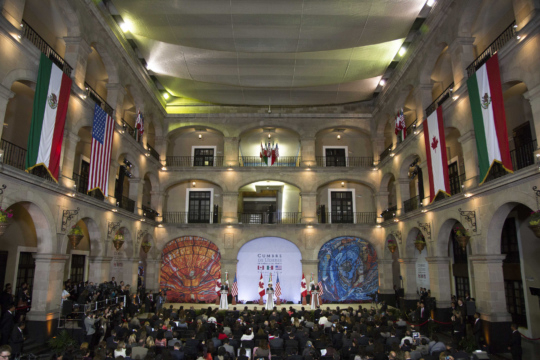
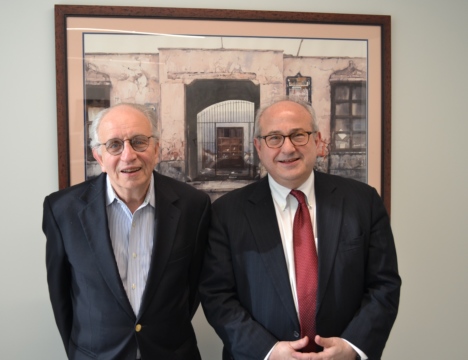
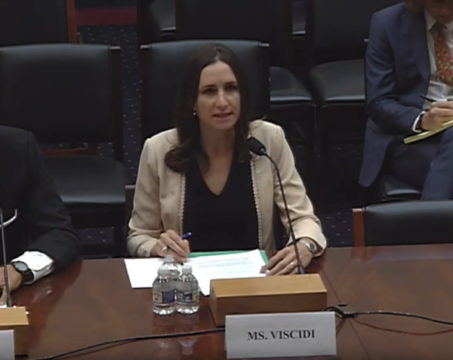 Video
Video
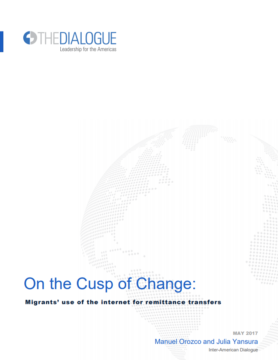
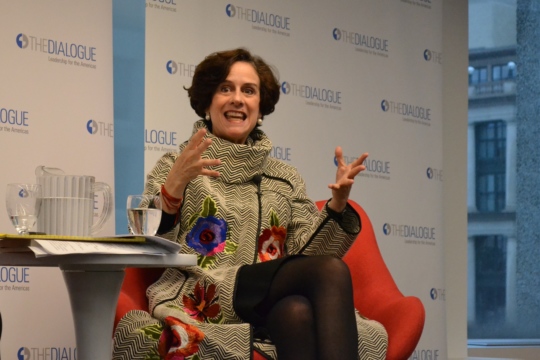 Video
Video
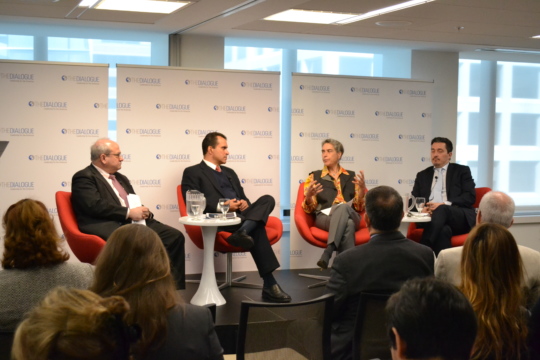 Video
Video
